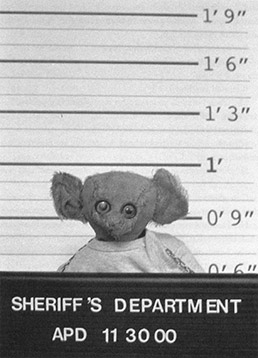When Toy Story meets Hurricane
 CREDIT: CLIFFORD CHASE (2006)
CREDIT: CLIFFORD CHASE (2006)"He was a strange bear, but I think he was a good bear."
There are some stories that seem to be universal. These are stories of grief, isolation and loneliness. All of us, at some point, have felt loss, have felt the painful reality of being different, have felt the eyes of others staring and judging.
In his novel Winkie, Clifford Chase addresses these dark universal stories. Shifting between dark comedy and existentialism, Chase tells the story of a little bear that came to life and was arrested for terrorism in the United States. Perhaps the saddest part of the tale is how relevant it still is, almost 10 years after it was written.
For the most part, Winkie follows the thoughts and memories of the titular bear as he sits in jail, staring at a ceiling light that never goes out. Sleep deprivation is a common torture tactic used against those arrested for terrorism and one can see the effect it has on Winkie’s psyche.
As the novel continues, Winkie explores darker and darker recesses of his mind, often with a skewed perspective that can only come from obsessing in this way. This introspection does occasionally cause problems, however.
There are times when the novel sounds almost pretentious or condescending, almost demanding that the reader acknowledge their own flaws while exploring those of the characters. This is especially noticeable when Winkie reflects on the childhood of Clifford Chase, who has inserted himself into the story as a child who owned the bear and character witness during the trial.
Despite these problems, Winkie does manage to keep the reader’s attention, mixing in charming moments of surprising innocence right when they feel the most needed. Even in his too-bright prison cell, Winkie manages to find a strange type of friendship and compassion. There is a background of support and kindness that gives the reader hope for a happy ending even in the darkest moments, although this background is often far from the bear’s sight.
There are also a lot of moments that do make the reader pause and take note, although they aren’t always the heavy-handed ones suggested by the author. Instead, it’s the violent outburst of a policeman, barely acknowledged, or an obviously false name given by one of the many witnesses for the prosecution.
To just briefly touch on the trial, it has to be said that a more subtle approach might have been better for achieving the goals of the work. There are a lot of moments during the admittedly interesting trial where it feels the writer has gone a bit too far on the side of nonsense to prove his point about the state of justice in the United States. This exaggeration takes away from the serious nature of the social issues Chase wants the reader to focus on.
Overall, Winkie is definitely a novel designed to make the reader think about how we define normal and the very nature of humanity. Too often, it’s easy to view those that look or act different than us as the “other”. Being a teddy bear, Winkie embodies this notion perfectly while remaining incredibly human in many ways.














